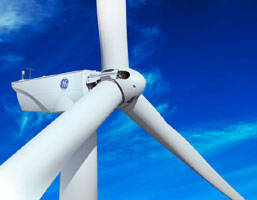General Electric is teaming up with the Department of Energy’s Sandia National Lab to design wind turbine blades that are quieter and produce more energy.
If rotors could be just one decibel quieter that would increase the energy a turbine can produce by 2% a year, predicts GE Global Research, the company’s technical development arm.
That 2% adds up to 5 gigawatts (GW) of wind power, given that about 240 GW of wind is expected to be installed globally over the next five years. That small increase would be enough to supply every household in New York City, Boston, and Los Angeles, combined.

Using Sandia’s high-performance supercomputer to perform complex calculations, GE is focused on methods that predict blade noise.
"Aerodynamic blade noise is the dominant noise source on modern, utility-scale wind turbines and represents a key constraint in wind turbine design. Efforts to reduce blade noise can help reduce the cost of wind energy and increase power output," says GE.
"By using high-performance computing to advance current engineering models that are used to predict blade noise, we can build quieter rotors with greater blade tip velocity that produce more power. This not only means lower energy costs for consumers, but also a significant reduction in greenhouse gas emissions," says Mark Jonkhof, Wind Technology Platform Leader at GE Global Research.
Currently, wind blade noise is measured using wind tunnels and field measurements.
Sandia is also collaborating with Texas Tech University on the first wind technology testing site to examine the interaction among turbines in wind farms.
